Self-heal oxymel is a traditional herbal preparation often used for general wellness support, especially during colder months. This herbal oxymel is a flavorful addition to every winter wellness routine!
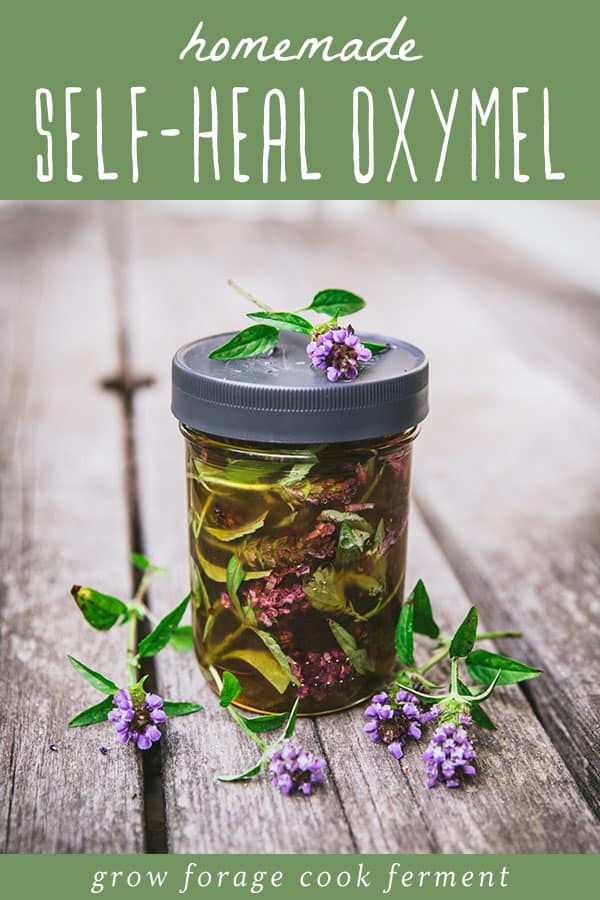
Want to save this post for later?
What is an Herbal Oxymel?
Herbal oxymel is a simple blend of vinegar and honey that has been used for centuries in traditional medicine. Both honey and vinegar have unique properties, and combining them with herbs may enhance their potential benefits.
Self-heal (Prunella vulgaris) is a wild-growing herb historically valued in herbal medicine for its diverse medicinal properties. As temperatures drop and indoor gatherings increase, many people look for natural ways to support their well-being.
Oxymels were traditionally made with more honey than vinegar, although the ratio can vary depending on what the needs are.
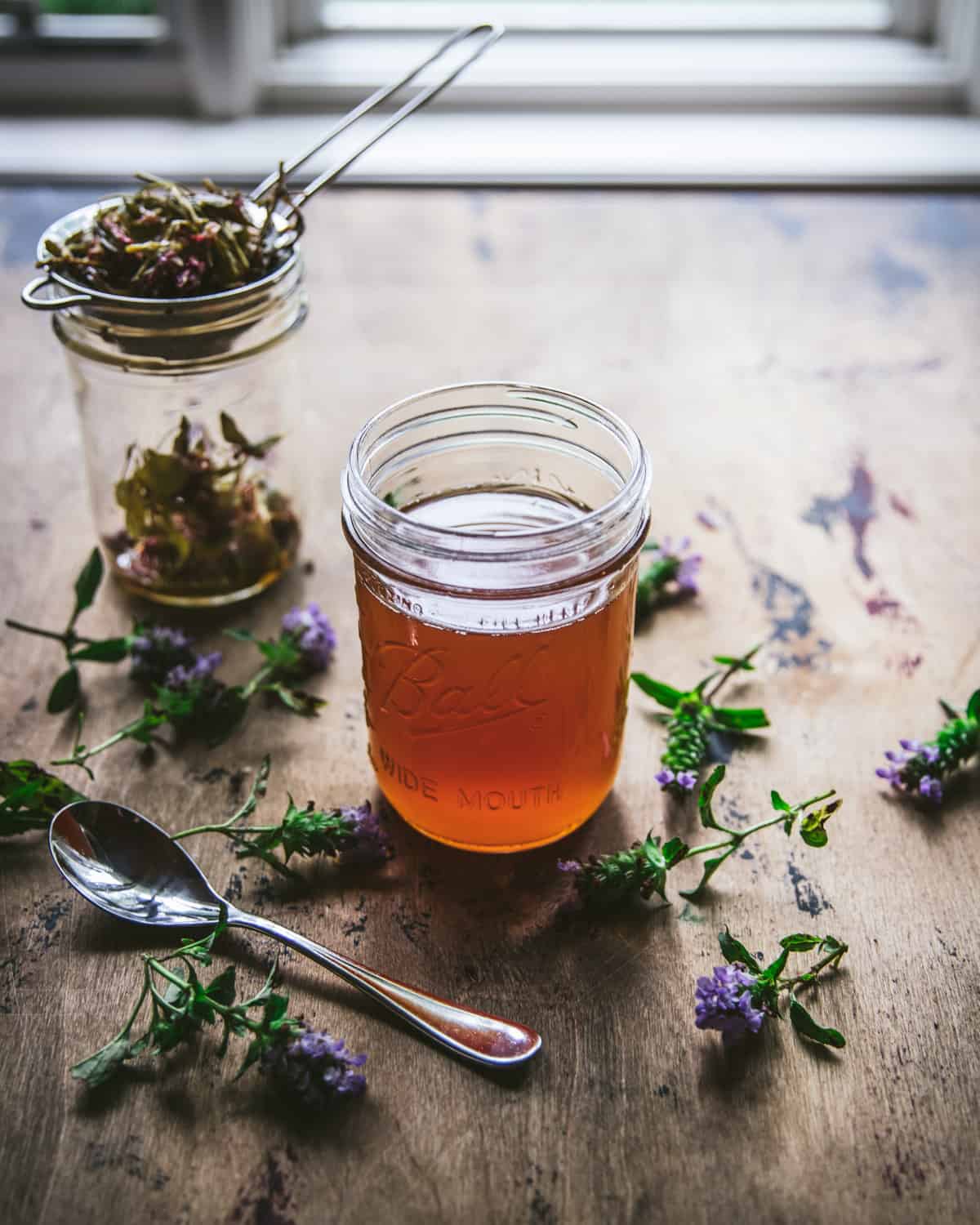
More modern oxymels today are usually about half and half honey to apple cider vinegar ratio making for a super delicious sweet and sour taste.
Today, fire cider is a popular type of oxymel that you may recognize!
What Herbs to Use in an Oxymel
There are many herbs that work well in an herbal-infused oxymel recipe to enhance its benefits and effectiveness.
Similar to a tincture, an oxymel can work with a wide variety of herbs.
Sage and ginger herbal oxymel is one of my favorites to make! Bee balm oxymel is another great choice if you happen to have fresh bee balm growing.
Some other common herbs to use in oxymels are lemon balm, chamomile, mullein, nettles, mint, and dandelion root.
These are all easy herbs to access in your own garden or on a quick foraging walk!
For an oxymel for overall wellness, consider infusing ingredients such as elderberry, rose hips, echinacea, garlic, onion, sage, rosemary, thyme, oregano, and cinnamon.
Many of these herbs have been traditionally used in herbal medicine, and some, such as elderberry and echinacea, have been studied for their potential immune-supporting properties.
In this oxymel recipe, self-heal is the key ingredient, valued for its historical use in promoting general well-being.
Some studies suggest that self-heal (Prunella vulgaris) contains bioactive compounds that have been explored for their potential health benefits, though more research is needed.
Self-heal, also known as heal-all or woundwort, has been studied for its potential antibacterial and anti-inflammatory properties. This oxymel with self-heal can be incorporated into a balanced diet as part of a winter wellness routine.

Self-Heal Oxymel Recipe
This is a really simple recipe to make!
I got the idea for this self-heal oxymel recipe from April of She is of the Woods, I recommend checking out her video for more info!
First, add some fresh foraged (from a clean and unsprayed location) self-heal into a jar until it is close to full. Use the flowers, leaves, and stems. If necessary you can use dried self-heal, but fresh plant material is optimal if you have access to it.
Then add some raw apple cider vinegar to the jar. Based on taste preferences, you can add an amount that feels right to you. I usually fill the jar with the vinegar about halfway.
Next, pour some raw honey into the jar with the herbs and vinegar until the jar is filled. If the honey is thick, it’s ok because the vinegar will help dissolve it into the combination.
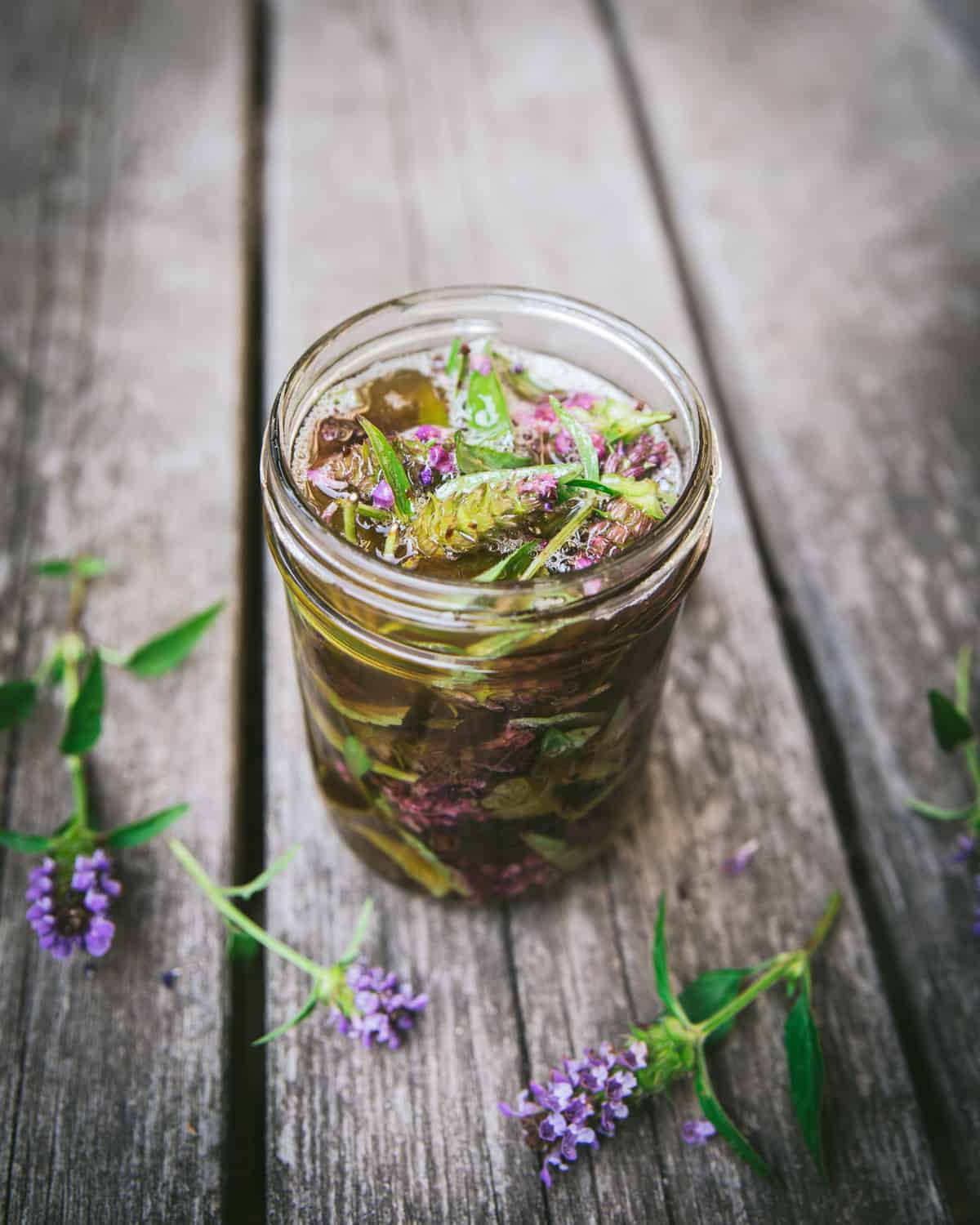
You want as little air at the top as you can fit, so fill the jar as full as possible without it spilling. The less air there is will prevent oxidation that will make the herbs turn brown.
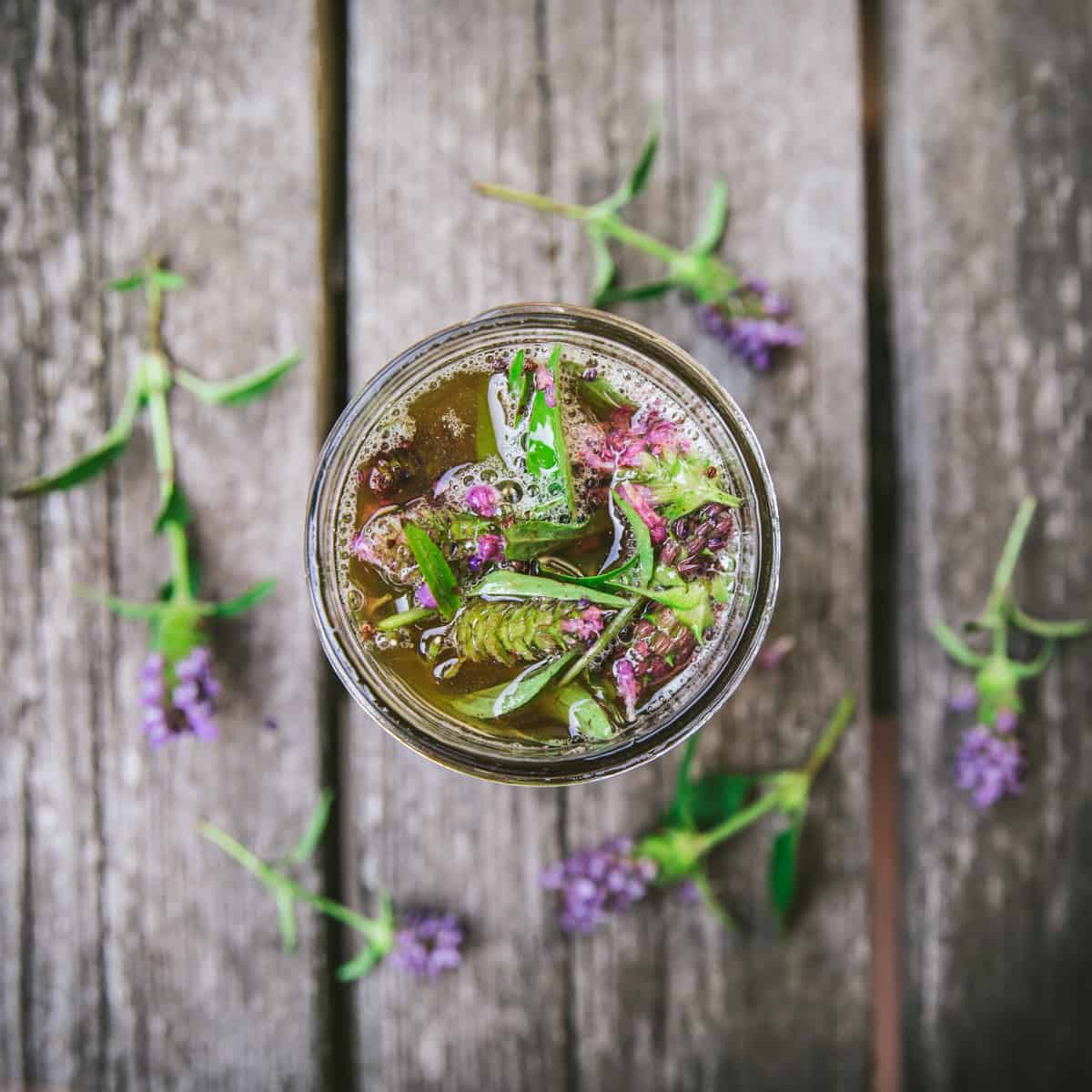
Then, wipe the rim of the jar, put a lid on it, and give it a few shakes until it’s combined.
*Note: if using a metal canning lid, be sure to put parchment paper underneath it since vinegar can react with metal.
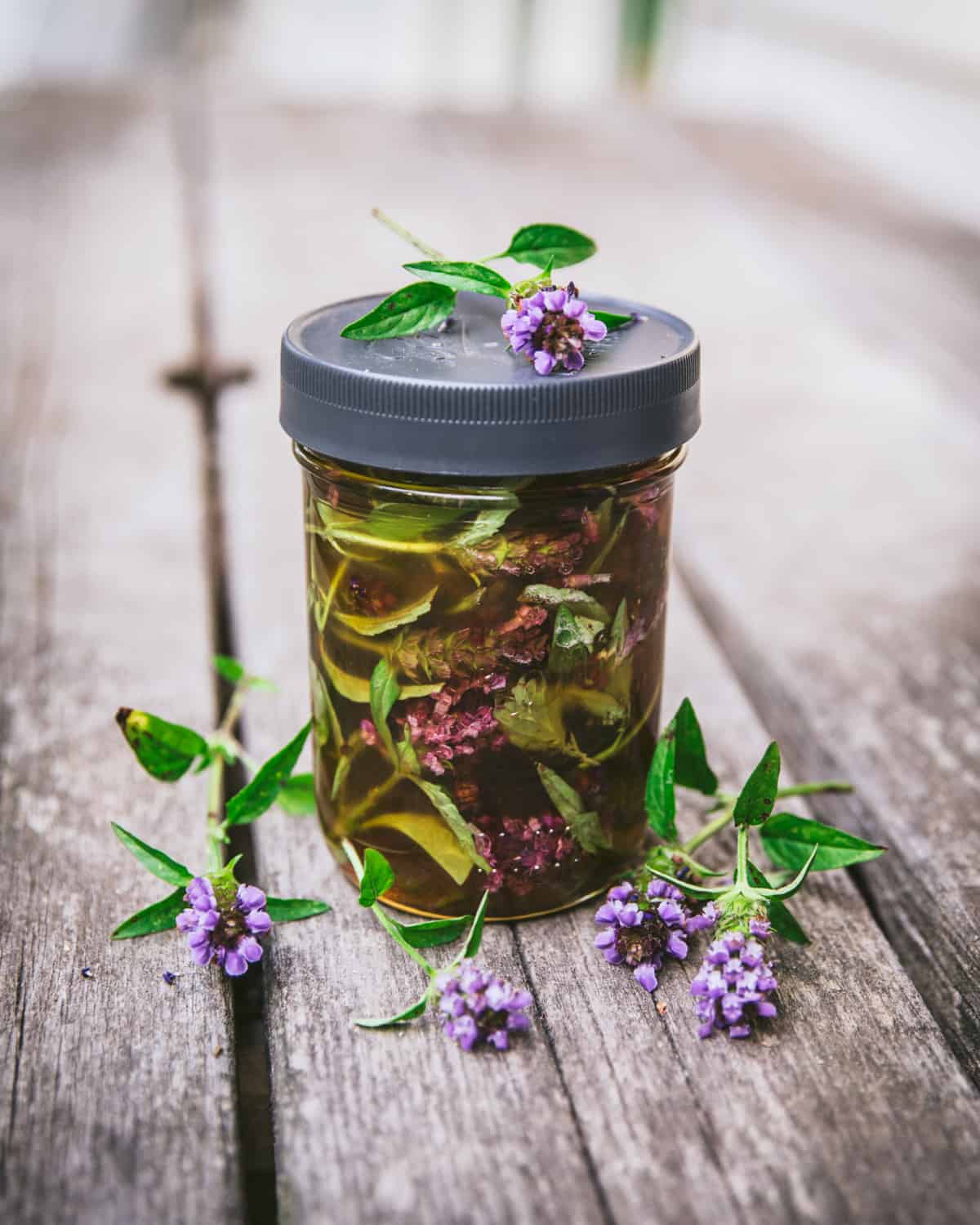
Store the self-heal oxymel in a cool dark place that is out of direct sunlight for as little as a week, or up to 30 days (or even more) to infuse.
When the infusion is ready, use a strainer to strain out the herbs from the liquid before using.
Keep the oxymel in a jar with a lid on in a cool dark place out of sunlight and it should keep for up to 6 months or more. To extend the shelf-life of self-heal oxymel, store it in the refrigerator.
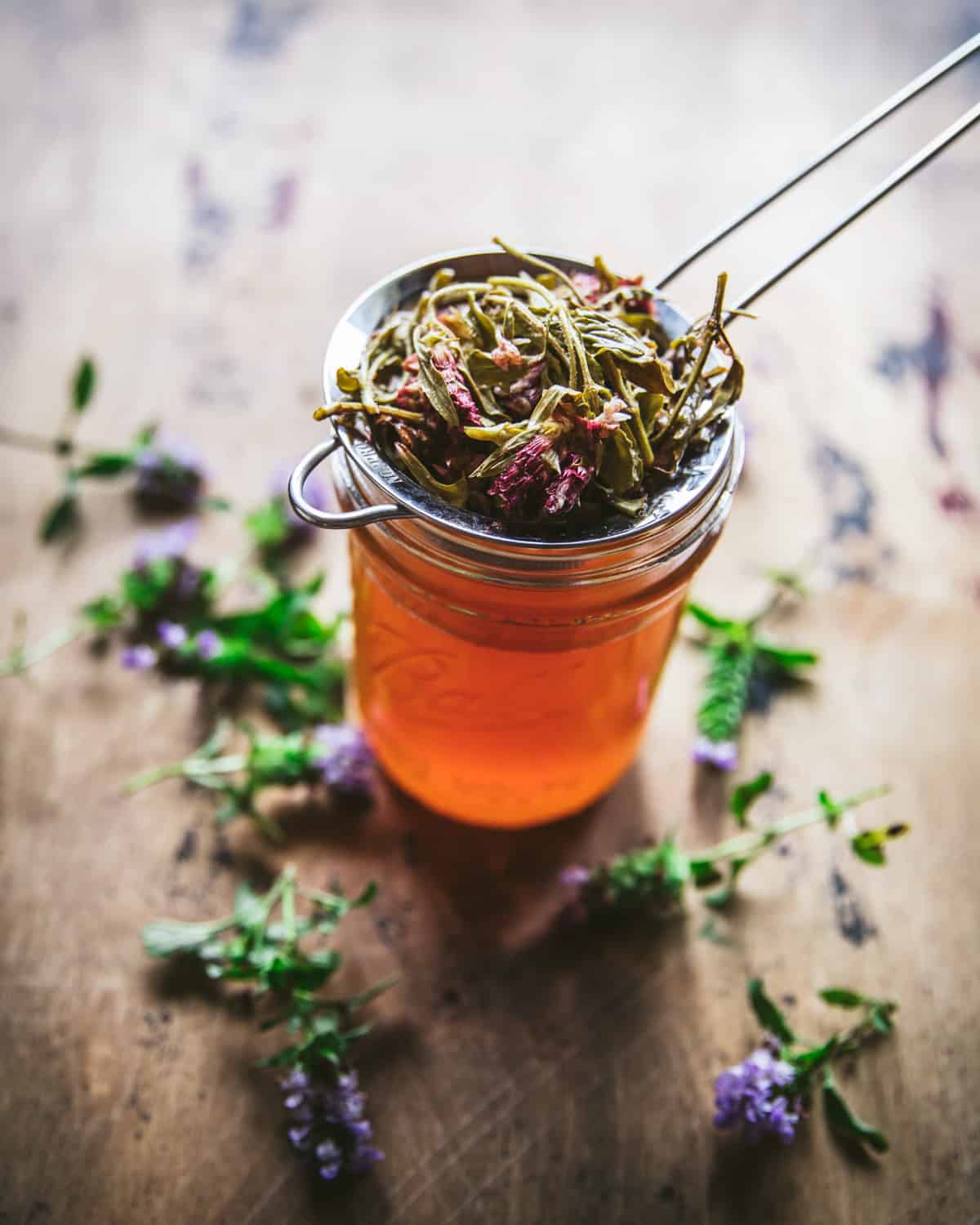
How to Use Self-Heal Oxymel
Self-heal is considered to be safe for most people!
Self-heal oxymel can be taken with the onset of sickness symptoms. For adults, take 1-2 tablespoons 2-3 times a day.
This oxymel with self-heal can also be used every day as a preventative measure to support your immune system. It tastes delicious as a bonus!
To use herbs besides self-heal, make sure to check the amount that is recommended for safe daily intake. Each herb has different properties and will vary in safe daily amounts.
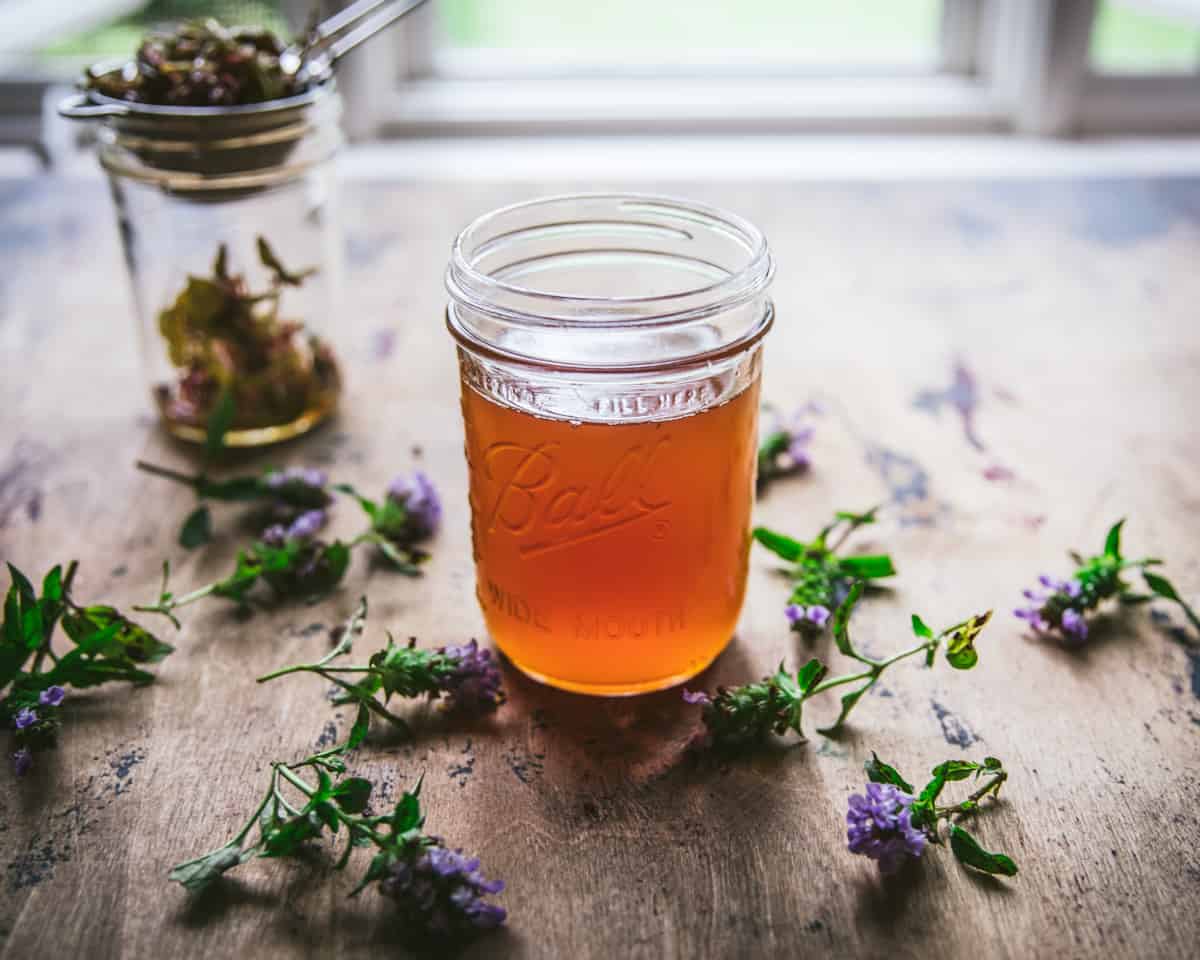
Can Children Take Oxymel?
Children over one year old may consume oxymels in moderation, but it is crucial to verify the safety of each infused herb for young children. Some herbs may not be suitable for young children, so consulting a qualified healthcare provider before use is recommended.
While self-heal is generally considered safe, dosage should be adjusted based on age and weight, and potential allergies should be considered.
Infants under one year of age should not be given oxymels due to the risk of botulism from raw honey.
Studies suggest raw honey is safe for children over 12 months.
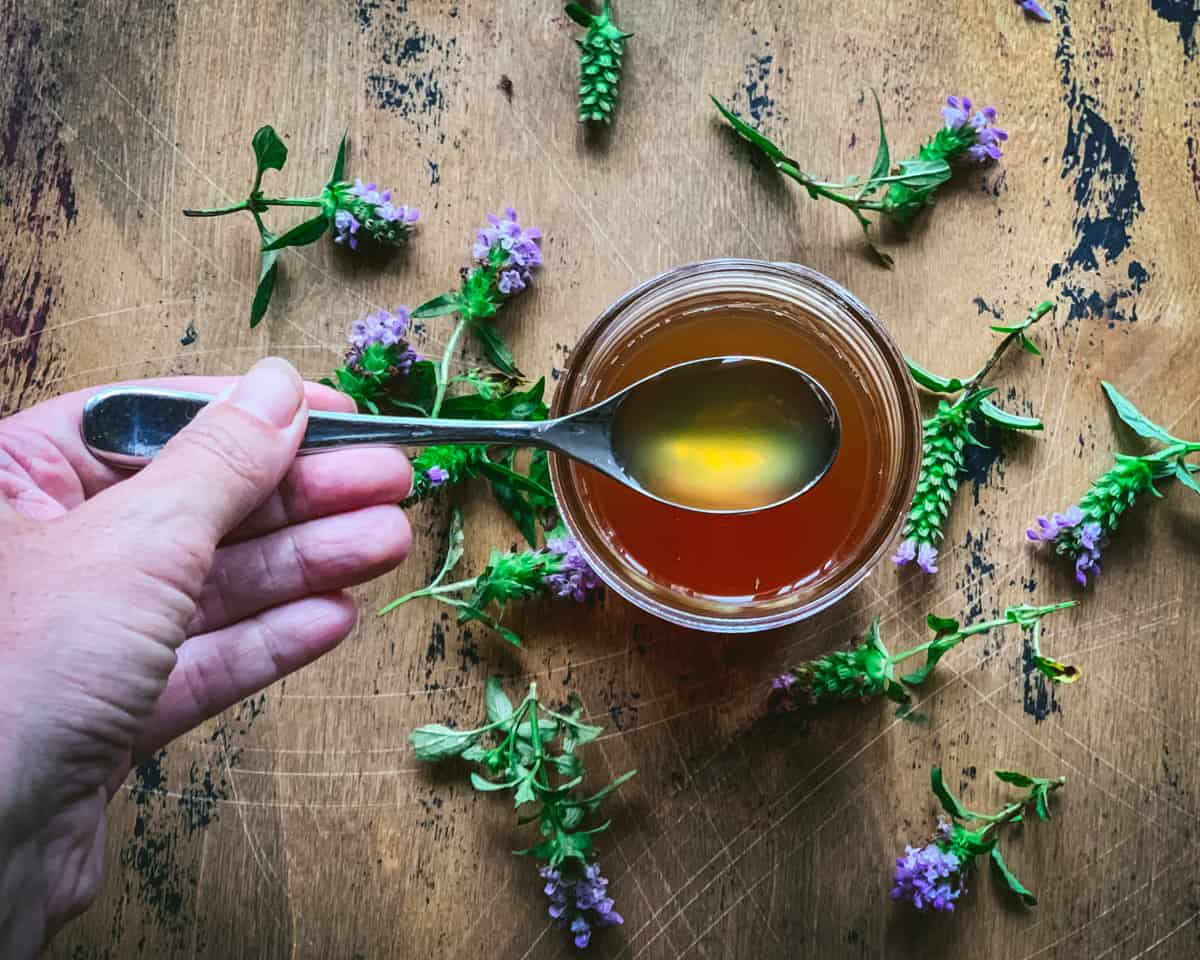
This oxymel with self-heal herb tastes delicious and is a wonderful health tonic with many benefits. The powers of self-heal really lend their hand in this recipe making it a highly effective home remedy with extra nutritional value too!
Both self-heal and oxymels were popular in use in history and still hold their ground today. Making for an old-fashioned feel, this homemade herbal remedy is a working part of a healthy immune system and a functional germ season saver!
While oxymels have been traditionally used in herbal medicine, their effectiveness depends on individual factors and should be viewed as a complementary approach rather than a substitute for medical care. More studies are needed to explore the potential benefits of herbal oxymels fully.
Looking for more herbal remedies for cold and flu season?
- Fermented Elderberry Honey
- Elderberry Popsicles for Immune Support
- Immune Boosting Herbal Tea Blend
- Manuka Honey Vinegar Elixer
- Fire Cider for Immune Support
- Fermented Honey Garlic
- Aronia Berry Oxymel
- Herbal Oxymel Recipe with Sage and Ginger
- Thyme Cough Syrup with Honey and Lemon
Self-Heal Oxymel
Ingredients
- 2 cups fresh self-heal flowers, stems, and leaves
- 1 cup raw honey
- 1 cup raw apple cider vinegar
Instructions
- Put the self-heal plant material into a wide-mouth pint jar. The jar should be nearly full of herbs.
- Fill the jar about halfway with raw apple cider vinegar, more or less depending on your preference.
- Add raw honey to the vinegar and herbs to fill the jar. Don't worry if the honey is thick, the vinegar will help it to dissolve and combine.
- Cap the jar with a lid, and give it a few shakes to combine.
- Put the oxymel in a cool place out of direct sunlight to infuse for at least a week and up to 30 days. Then strain out the self-heal with a fine mesh strainer before using.
- Store the strained oxymel in a jar with a lid in a cool place out of direct sunlight. It will keep for 6 months or more. It can also be refrigerated for longer shelf life.
Notes
- Fill the jar as full as you can without overflowing it, as you don’t want too much airspace at the top. This will prevent oxidation, which can make the herbs turn brown.
- If you use a metal canning lid be sure to put a piece of parchment paper under it as the vinegar can react to the metal.
- For adults, take 1-2 tablespoons 2-3 times per day when you feel a sickness coming on.
- This self-heal oxymel is safe for children over the age of one, just use a smaller dosage based on their size.
- Oxymels should not be given to children under the age of one due to the raw honey.


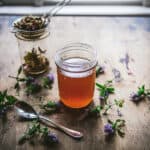

Hi! What amount of dried herb could I use in place of fresh plant when making an oxymel? Would it be the same volume amount the recipe calls for?
Use a third of the amount of dried herb for the fresh herb.
Colleen,
Just made 3 jars of Self-Heal Oxymel. Just cut Sage to make the Sage and Ginger Oxymel.
Question: I have plenty of Fennel seeds. can I make an Oxymel and Honey ?
Besides a great flavor what other benefits would that have, and what other herbs would you use with that?
Dianna
Hi Dianna. I’ve never made an oxymel with seeds before, but I’d imagine you’d need to use quite a bit to really extract their flavor. Lemom balm, garlic, mint all go well alongside fennel.
What are self heal plants?
Hi Roishin. You can learn more about self-heal here: https://www.growforagecookferment.com/foraging-self-heal/